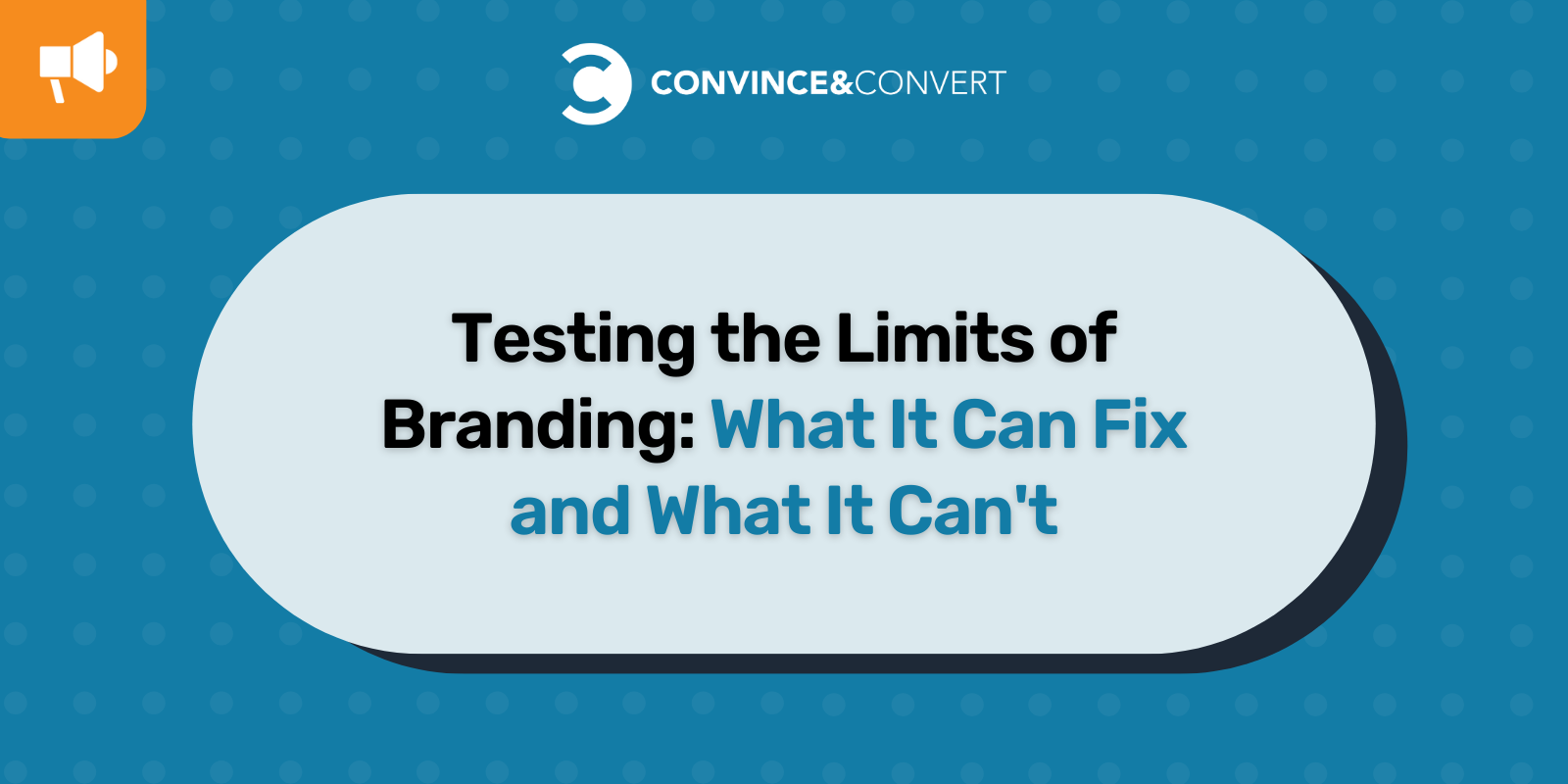
Warren Buffett, investor and philanthropist, understood both the power and the fragility of brand: “It takes 20 years to build a reputation and five minutes to ruin it. If you think about that, you’ll do things differently,” he famously said.
And while a reputation is hard won, it’s hard-working too: Whether you’re building a passionate community, shaking up your industry, or changing the world, strong branding can help you get there.
But branding can’t fix everything. Today’s consumers are more marketing-savvy and skeptical than ever before and almost half don’t trust brands to deliver. Understanding what branding can do for your business, and when you’ll need to put your money where your mouth is, is essential in the modern business landscape.
Whatever your long-term strategic aims, remember that authenticity and consistency should be at the heart of your branding strategy. When these values falter, even a powerful brand can’t save you.
3 Case Studies in Branding Success
Branding is an incredibly powerful tool and when it’s used right it can position your business to change the world. Here are three illustrative case studies that demonstrate what branding can do.
Industry Disruption With Apple
Good branding can grant you pole position in the marketplace from the outset, and provide a strong platform for redefining the industry you’re entering. Take Apple, whose focus on visual appeal and effective marketing to creatives changed the world of tech forever.
In the early 1980s, nobody would have expected computers to be cool, let alone a veritable fashion accessory. But Apple’s visionary branding allowed it to find more than mere success: it became a long-term industry disruptor.
Even the name Apple, a bold single-English word choice evoking nature, religion, and more, set the brand apart from other tech big-hitters like Microsoft and IBM (the acronym is short for the catchy International Business Machines). Many could have questioned the name Apple for a tech company at the time, but as Jobs and Wozniak built up the business, this name, and the wider brand, gave Apple the platform it needed to shape the tech industry.
Social Impact a la Toms
Many businesses are launched because their founders want to change the world for the better, but few actually succeed in this aim. This may be because good intentions aren’t enough: you need to authentically communicate your purpose, and be seen doing good to be successful.
Branding is essential to this model, so no matter how ethical your organization is, you need an effective brand strategy to communicate your values. Shoe brand TOMS launched in 2006 and popularized the buy-one-give-one model, famously donating a pair of shoes for every pair they sold. This model was integrated into its branding from the start, articulating its purpose with the “One for One” campaign.
Ultimately, TOMS left the BOGO model behind to focus on more sustainable methods of social change. But despite this departure, the TOMS brand retains powerful top-of-mind awareness when consumers think of ethical brands.
Online Community Building
Branding is an exceptionally powerful way of building a community around your business. This leads to repeat customers and a strong grip on your chosen market.
Take fast-fashion retailer Boohoo. With over 20 million shoppers worldwide in 2022, this brand has created a dedicated following How have they achieved this? By investing in influencer marketing, based on an understanding of their target market at what they want to see.
Alongside this, they’ve used social media to hone a fun and laid-back brand tone and consistently engaged their audience with pop culture references and relatable content. The end result is a customer base who are loyal to a brand that “gets them”.
A Look at What Branding Can’t Fix
But branding isn’t a cure-all. If your business has deeper problems, from flawed products to fundamental failings, you’ll have to turn inward before you turn to outward branding.
A Bad Product
If your product isn’t up to scratch, eventually your customer base will see you for what you are.
In 2020, short-form streaming platform Quibi raised $1.75bn and on the day of release, it made it to the top 3 on the app store. This initial success was partly down to branding: the catchy name told customers they were getting a quick entertainment hit and a sophisticated, forward-looking logo added to customer trust.
But despite Quibi’s strong brand, it wasn’t enough to establish a platform for success and the app had crashed and burned by December 2020, lasting a mere 8 months. The main reason for this was that the service never met user expectations: the app’s short-form content was mediocre at best and no strength of branding could disguise this forever.
Bad Operations
Given that good branding relies on connecting with your customers, it’s no surprise that bad customer service can’t be fixed by branding alone. If you’ve made customer service blunders, then a brand pivot can help but only if it’s accompanied by meaningful change within your organization, and in the way you engage with your customers.
Wells Fargo was rocked by scandal in 2017 when it was caught creating fraudulent accounts for its customers. As well as being fined more than $3bn for its failings, in that same year it became America’s least respected company, ranking worse even than tobacco giants.
Wells Fargo had to rebuild from the ground up. Rebranding was a part of this process and in 2019 they unveiled a new logo, but this was accompanied by real cultural change in the organization (the creation of a watchdog advisory council with independent directors) and donations of almost $9 million to 462 nonprofits and schools.
Social and Moral Failings
Corporate giants Amazon should have built up the brand capital to weather any storm, but among today’s ethically committed consumers there are some lines you can’t cross, no matter how strong your brand is.
Amazon’s very public battle with its own workforce has hurt its brand and its own marketing efforts have proven counterproductive and damaging. From inflammatory ads showing robots replacing its workforce to backlash against “fulfillment center” tours, Amazon finds itself facing strike after strike and calls for boycotts, despite this branding blitz. And while Amazon may have the market share to make it through… well… most brands aren’t Amazon-level big!
Final Thoughts on Branding
Branding is incredibly important, but it can’t fix everything. If you’re failing your customers or your wider moral duties then organizational change will have to accompany a rebrand to restore trust among your audience.
That said, a strong branding strategy is integral to achieving your business goals. From creativity and innovation to building a loyal community, you can’t truly connect with industry peers and consumers without effective communication.
And that’s where branding comes in: ultimately, branding is a collaborative, communicative project. Powerful branding informs your customers of your unique selling proposition, your mission, and your values. It sets your business on the right road — what you do from there is up to you


